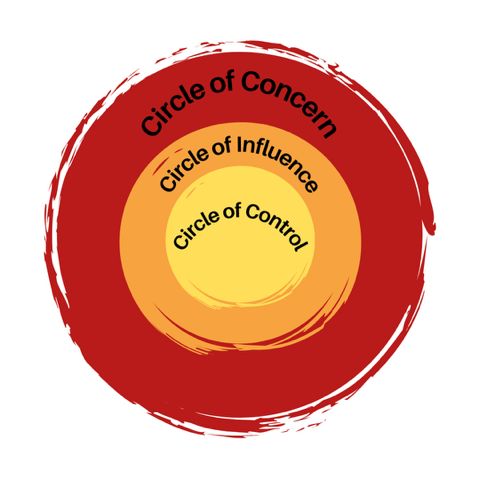
Source: Abigail Keenan/Unsplash
This election reminds me of another presidential election not long ago (but before the last one). Living and working in a famously liberal-progressive city, after that particular election, I was inundated with terrified, devastated patients. Anxious, scared, even considering leaving the country. It was my job to buoy them up—help them find at least one true, hopeful thing that would help them feel better. At least until the next week.
It was then I stumbled upon the idea of circles of control, concern, and influence. Often attributed to Stephen Covey, the famous 7 Habits of Highly Effective People author, it turns out the circles of control and concern originated with ancient Stoic philosophers, and the circle of influence originated in the 1940s with a social psychologist named Kurt Lewin. Stephen Covey just popularized the idea.
How did something so abstract help me help those dragging themselves to my office in the days, weeks, and months after that shocking presidential election? Easily, and it can help you too.
How the Circles Work
We know we’re supposed to let go of things we can’t control, but how?
Think of a graphic, like the one below, with a small circle of control, a bigger circle of influence, and the biggest circle of concern.

Source: Laura Brady, with permission
Look at the smallest circle first, the circle of control. That’s you, right in the middle.
There are actually very few things we control. We control what we do with our bodies (hopefully); how we act, what we think (easier said than done, I know), and how we react to events or people (again, not necessarily easy, but doable!). Pretty much everything else lies outside our circle of control. No matter how hard we try, we won’t be able to control those things.
We can’t control the election (only how we vote) or what our partner eats for breakfast. We control how we raise our kids, but not what they choose to do with that raising. We can’t control the woman smacking her gum juicily all day at work, but we control wearing headphones, or asking her to stop. She may continue because she forgets, or it’s the only way she controls her anxiety or, worst case—unlikely!—she wants to annoy us. That’s not up to us.
The next circle is the circle of influence. Our impact is a little bigger here than in that tiny circle of control.
What’s in our circle of influence? Maybe what the teacher or principal does after our child gets called out for sprinkling glitter on the seat of the teacher’s chair—or maybe not. We influence our communities or even our state by volunteering for a neighborhood watch or committee, writing letters to the editor, protesting for cleaner water, human rights, or acting on any passion of ours.
Still, there’s only so much we can influence. We vote, but we can’t wholesale rewrite the policies of those we vote for (unless we work for them or decide to run for office). You’re grasping the concept.
Finally, look at the circle of concern. This, I’m afraid, is the bad actor. We focus on the circle of concern at our own peril. It’s a waste of time, energy, and resources. Our circle of concern squanders what Mary Oliver so beautifully dubbed our “one wild and precious life.”
There are millions of things in the circle of concern. Climate change. The outcome in the election I referenced, and what happened afterward. Hate crimes. Our children’s distant futures (or pasts). Whether a newborn (if we are pregnant) will have certain problems. Society’s economic issues or rampant discrimination. Injustices. Yes, continue contributing; donating to or joining groups that impact these issues but, let’s face it, most of us won’t move the needle in a big way on our circle of concern.

Source: Avi Chomotovski/Pixabay
So stop trying.
Here’s the rub: Most people spend a lot of time focused on things in their circle of concern. If that’s you, the more time and energy you spend worrying about your circle of concern, the worse you probably feel, because it’s almost totally outside your control.
Conversely, the more time and energy you spend thinking of things in your circle of control (did you call that friend you miss? Write that email weighing on you? Take that short, brisk walk?), the better you’re likely to feel.
It’s simple. The next time you feel uptight, anxious, worried, or wound tight, ask yourself, “Am I thinking of things in my circle of concern?” Chances are, you may be. Refocus. Tell yourself what you know, that you can’t control your circle of concern, then transfer your thoughts and energy to something you can do something about, in your circle of control (or sometimes, circle of influence). It sounds simple, but it works. And over time, rewiring your thinking this way can be, well, almost magic.
